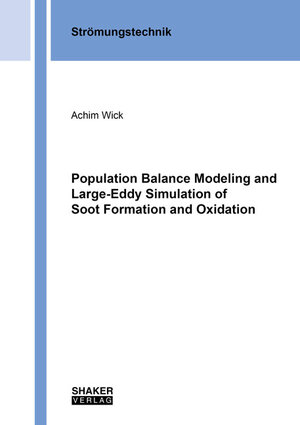
×
![Buchcover ISBN 9783844072754]()
Population Balance Modeling and Large-Eddy Simulation of Soot Formation and Oxidation
von Achim WickTo meet the increasing global demand of usable energy, the combustion of fossil as well as renewable fuels in multifarious applications is of utmost importance. Pivotal targets for the development of combustion devices are the enhancement of the energy efficiency, applicability to alternative fuels, and the reduction of pollutant emissions. Computational Fluid Dynamics simulations have been established as an integral part of this development process. With increasing computing capacities and focus on pollutant emissions, the interest in Large-Eddy Simulations (LES) is growing. In particular, the accuracy of simulations of soot formation in turbulent flames largely benefits from the resolution of large-scale turbulent fluctuations in LES.
The present thesis contributes to the systematic analysis of integrated LES models for soot evolution and the development of submodels of such integrated modeling suites. The first part focuses on the assessment and development of moment methods for the solution of population balance equations governing the soot particle dynamics. Then, a multivariate physico-chemical soot model accounting for the diversity of the chemical composition of soot particles was formulated and validated for a laminar flame. Next, the propagation of errors related to flamelet assumptions into soot quantities was investigated taking advantage of large-scale Direct Numerical Simulation data of a sooting turbulent jet flame. Eventually, LES of a model aircraft combustor were performed employing a flamelet combustion model and a state-of-the-art soot model based on a bivariate description of the soot particles.
The present thesis contributes to the systematic analysis of integrated LES models for soot evolution and the development of submodels of such integrated modeling suites. The first part focuses on the assessment and development of moment methods for the solution of population balance equations governing the soot particle dynamics. Then, a multivariate physico-chemical soot model accounting for the diversity of the chemical composition of soot particles was formulated and validated for a laminar flame. Next, the propagation of errors related to flamelet assumptions into soot quantities was investigated taking advantage of large-scale Direct Numerical Simulation data of a sooting turbulent jet flame. Eventually, LES of a model aircraft combustor were performed employing a flamelet combustion model and a state-of-the-art soot model based on a bivariate description of the soot particles.


